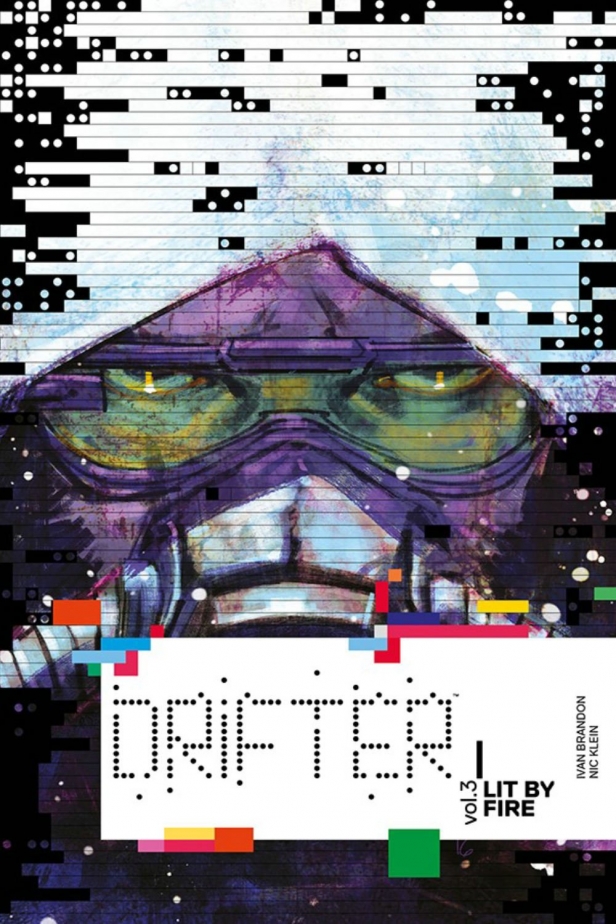It’s time to let you in on a little secret about the smartest sci-fi comic in recent years: this is the third volume, making it an unlikely choice for a review, but folks, it’s just that damn good.
Abram Pollux tumbles from the stars when his ship takes a nosedive onto a planet of dust and ruin. Ouro is a backwater world, as forgotten by the universe as the fading memories the inhabitants struggle to hold on to. Miraculously, Pollux survives both the crash and the blast to the guts that greets his arrival. Three days pass, only for Pollux to awaken to a world where his ship crashed one year ago, and the man who shot him appears to save his life.
The blend of pulp Westerns and philosophical sci-fi is nothing new, but what has been created here is something greater than the sum of its familiar parts. Dialogue and narration has an off-kilter beat, not quite standard English for not quite standard humans, and this arrhythmic approach extends to the narrative that moves between moments of action and time with the expectation that the reader fills in the missing pieces.
Drifter boasts an extensive and diverse cast, and an array of alien life forms both fantastic and grotesque. First glance shows three major lifeforms at home on Ouro: the humans, descendants perhaps of the previous mining age or simply wanderers who have rolled in to humanity’s industrial remains; the Wheelers, humanoid entities both peaceful and violent who are to be avoided at all costs; and the native Blues, a gentle species who are drawn to sadness.
Pollux encounters the latter when he crawls from the wreckage of the ship. Reacting with fear and violence, he shoots a Blue who is trying to help him. As another helps their friend away from the death-bringing human, Pollux narrates, “It doesn’t stop to see what a coward looks like”.
After his own incident at the end of a gun, Pollux takes in the sight of the frontier-esque Ghost Town, a ramshackle hub for the humans of Ouro, where Lee Carter, his medic saviour and local marshal, endeavours to prevent him from throwing his life away in the name of revenge.
Carter and the priest emerge as the two central characters, with Lee providing a grounding presence in a narrative that pounces from point to point. Pollux is a survivor – his role evolves and mutates in a manner not dissimilar to the better RPG icons in an open-world arena.
Highly detailed, exquisitely rendered and with incredible designs, even those who have found Drifter not to their liking have conceded that the art makes this an instant success. Intriguingly for an artist known for his experimental layouts, Klein dials it back and lets the panel contents take centre stage – and boy do they.
Credit must be given to the innovative design work of Tom Muller and letterer Clem Robins, that is in harmony with the aesthetic vision. The covers embrace Muller’s minimal, grid-based, modular direction, while Robins’ hand-lettering keeps the idea of humanity at the forefront.
If you like your sci-fi to be challenging, embrace obfuscation and puzzling, not to mention enjoy incredible artwork suffused with tangible atmosphere, you should definitely give Drifter a spin.
